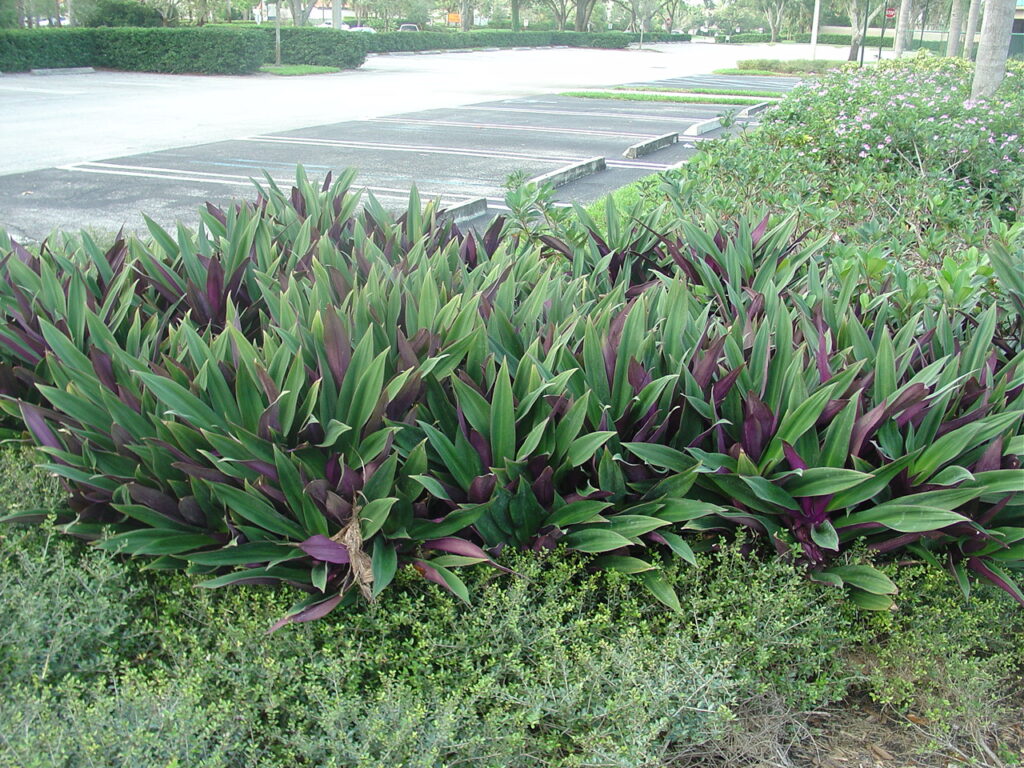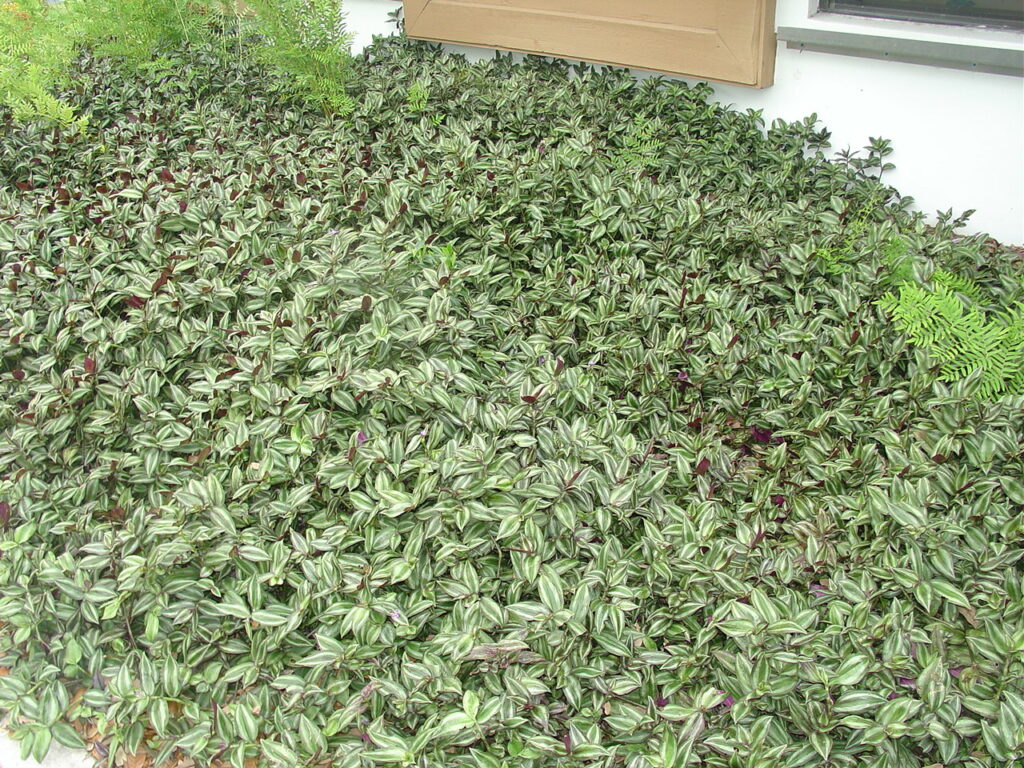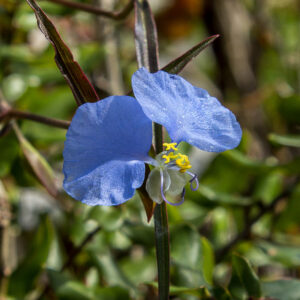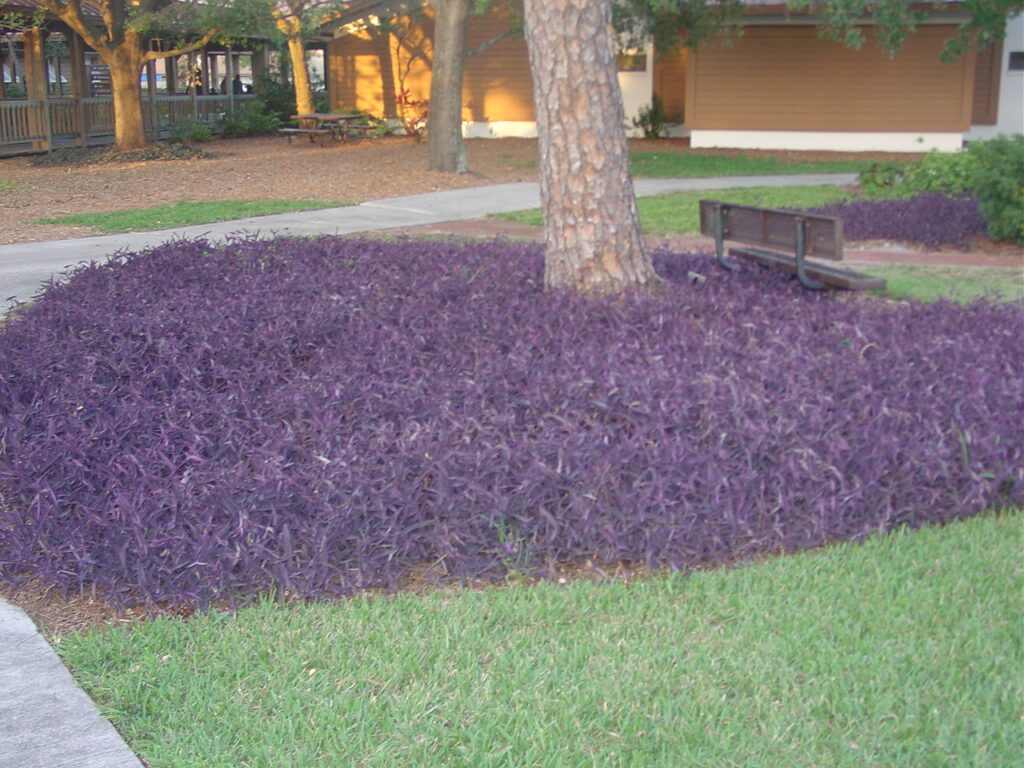
Oyster plant
The Spiderwort Family, Commelinaceae (com-ah-lynn-ACE-ee-ee) combines the world’s most ephermal flowers with the world’s toughest foliage. These plants share the common features of having soft, watery, often a little succulent tissues, frequent purple coloration in the leaves, and delicate 3-petal flowers usually blue, white or pink, and stamens with a “beard.” Anybody interfaced in plants from any angle encounters Commelinaceae. There are numerous garden and houseplant species, but watch out, several also invade natural areas, and some irritate human flesh. Some of our most beautiful local wildflowers are in this family, as are some seriously pesky weeds.
Here’s a local sampler of horticulturally significant species:
Basket Plant (Callisia fragrans) is an old groundcover that has fallen out of favor. Easy to grow, but too easy…invasive, and not so great looking anyhow. This species could be mistaken for a small bromeliad.
Blue Ginger (Dichorisandra thyrsiflora) is not a ginger, but it does make spikes of ginger-ish blue toned flowers if moist, shaded, and free from cold. Like many unusual treats, a bit demanding unlike most of the other toughies below.
Ohio Spiderwort (Tradescantia ohioensis) is a tall blue-flowered spiderwort native to Florida a little north of our area, yet okay in moist shaded Palm Beach County gardens. It comes in light blue and white selections. (More northern gardeners may be familiar with the similar Virginia spiderwort which does not want to be down here in Palm Beach County.)
Oyster Plant (Tradescantia spathacea, Rhoeo discolor) is an old favorite groundcover. It is also an invasive exotic and can irritate the skin.
Purple Queen (Setcreasea) (Tradescantia pallida) has purplish foliage and can cover the ground if it is happy and well maintained. It too escapes cultivation and irritate skin.
Small-leaf spiderwort (Tradescantia fluminensis) is a severe invasive exotic, like many invasives, kno9wn as a groundcover in the garden world. Forget it.
Zebrina (Tradescantia zebrina) garden-popular with its dangling purple-striped leaves is best in baskets and containers as a houseplant. Some use it as a groundcover but covering the ground satisfactorily is not easy, and is to be avoided as this species escapes cultivation into natural areas.
And there are weeds, including locally Dewflower (Murdannia nudiflora). Owners of neglected yards, like mine, are intimate with spreading dayflower (Commelina diffusa), a worldwide weed with an impressive claim to fame, having evolved herbicide resistance back in the 1950s before herbicide resistance was cool.
This week my biology teacher wife Donna shared with me an internet report (there exist several) showing purportedly mutated flowers from the Fukushima nuclear disaster. http://andyjwells.tumblr.com/post/124820230062/man-discovers-mutant-daisies-growing-at
The name “dayflower” comes from the ability of the flowers in Commelinaceae liquify at the end of the day as an adaptation to recover nutrients if pollination fails. Perhaps the most delicate part of Commelinaceae flowers is a tuft of ultra-fine hairs on the stamens. The hairs are so fragile they mutate especially readily, sometimes visibly to the naked eye, with low radiation exposure. The mutating hairs helped monitor radiation following the Chernobyl and Fukushima disasters. I wonder if a few dayflowers in the garden around a power plant works as a cheap early warning leak detection system. Or maybe a Geiger tree?
100 Things (1)
Around North County (22)
Community (10)
Events (61)
Health (24)
People (54)
Real Estate (16)
Recent News (2)
Science (24)


